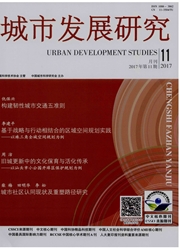

 中文摘要:
中文摘要:
基于1998~2007年的中国工业普查数据,整合了集聚效应和企业选择效应,考察中国城市生产效率的差异及其影响机制。研究证实,总体上中国城市生产效率具有显著的集聚效应,但现有文献忽视了选择效应的影响,一定程度上高估了集聚效应。从时间历程看,中国大城市正经历着从低效企业被动挤出转向高效企业主动进入的过程。20世纪末期,金融危机的动荡和中国政府的治理加速了企业的优胜劣汰,被动选择效应一度起到主导作用。但随着中国经济的长足发展,企业主动选择效应日益突出,吸引高效率企业进入成为提高城市生产效率的重要途径。从产业类型看,劳动密集型产业的城市选择效应突出,资本密集型产业则体现出主动选择机制的作用。对于不同规模、不同发展阶段的城市,由于影响城市竞争力的机制不同,应科学制定相应的发展政策。
 英文摘要:
英文摘要:
Large cities are more productive than small cities.This may arise from agglomeration economies or firm self-selection behaviors.This study is to explore the driving force of urban productivity by differentiating the role of agglomeration economies and firm′s self-selection effects.Based on the annual survey of industrial firms during 1998~2007,this study first estimated total factor productivity(TFP) for firms located in a city using a nonparametric method and then generated the aggregate urban TFP weighted by employment.Empirical results suggest the agglomeration economies contribute to urban productivity,but firms′ self-selection also play its role.Self-selection effect exists in labor-intensive industries and sorting effect is observed in capital-intensive industries.Self-selection effect is more important in 1998 while sorting effect gains its momentum in 2007.This study would enrich the understanding of the clustering mechanisms and has important implication of clustering policies.
 同期刊论文项目
同期刊论文项目
 同项目期刊论文
同项目期刊论文
 Regional and Sectoral Differences in the Spatial Restructuring of Chinese Manufacturing Industries i
Regional and Sectoral Differences in the Spatial Restructuring of Chinese Manufacturing Industries i Spatial Organization of Fortune Global 500 Corporations in China: An Empirical Study of Multinationa
Spatial Organization of Fortune Global 500 Corporations in China: An Empirical Study of Multinationa Geographical Dynamics and Industrial Relocation: Spatial Strategies of Apparel Firms in Ningbo, Chin
Geographical Dynamics and Industrial Relocation: Spatial Strategies of Apparel Firms in Ningbo, Chin 期刊信息
期刊信息
